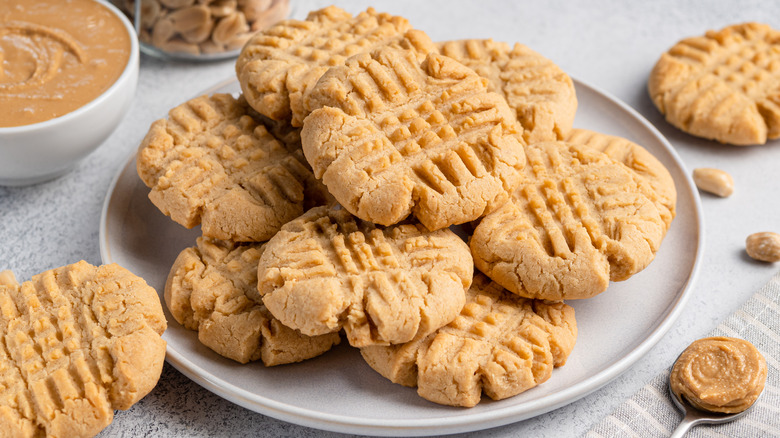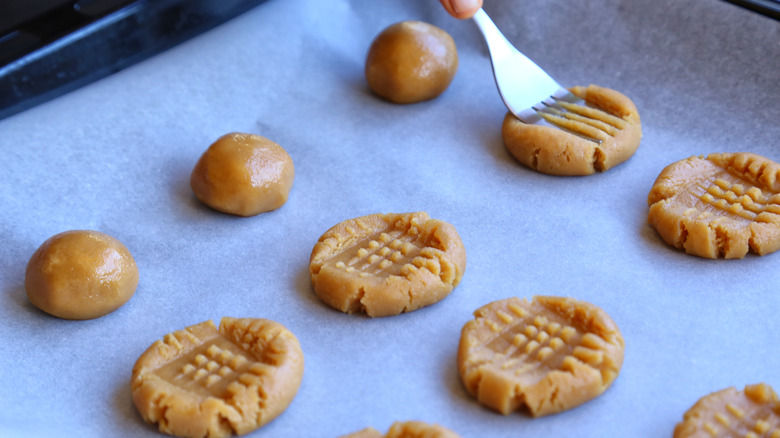The Truth About Peanut Butter Cookies' Classic Crosshatch Pattern
Unlike oatmeal raisin cookies and chocolate chip cookies which can often be mistaken for one another upon first glance, peanut butter cookies are easy to tell apart. Whether they're homemade or store-bought, the tops are always stamped with the signature crosshatch pattern, made from the tines of a fork. Nearly every peanut butter cookie recipe today calls for adding the same finishing touch, however, it wasn't always that way.
According to Grub Americana, George Washington Carver published three peanut butter cookie recipes in a 1916 research bulletin about peanuts, but none of his suggestions included the iconic fork pattern. That didn't come until 1932 when the Schenectady Gazette published a peanut butter cookie recipe that instructed bakers to, "Shape [the dough] into balls and after placing them on the cookie sheet, press each one down with a fork, first one way and then the other, so they look like squares on waffles." A year later, Pillsbury picked up the tip and added it to the 1933 edition of its cookbook "Balanced Recipes," popularizing the practice among American bakers.
Is the crosshatch pattern decorative?
Neither the Schenectady Gazette nor the Pillsbury recipes explained why the fork marks were necessary when making peanut butter cookies, but that didn't stop people from blindly following the step (via Grub Americana). This led the New York Times to seek answers from readers in 1979 and publish the findings in an article called "The Fork and the Cookie." Proposed answers included speculation that the peanut butter in the cookie dough prevents it from spreading like other types of cookies would, while others suggested that the fork marks allow the surface to crisp up better.
The Times ended up settling on a much simpler explanation: the pattern differentiates them from chocolate chip cookies in the cookie jar. However, Betty Crocker argues otherwise. The baking company shared that the reason has to do with the consistency of the dough. Because peanut butter cookie dough is dense, using a fork helps flatten it into the ideal shape and thickness, allowing it to bake evenly. Whether you trust this explanation or the one offered by the New York Times, it seems like it's worth adding the crosshatching either way. It looks nice, and it'll make for a tastier cookie.

